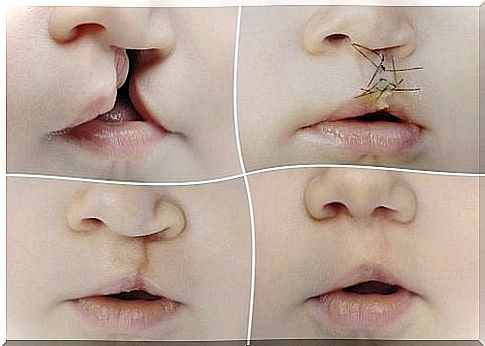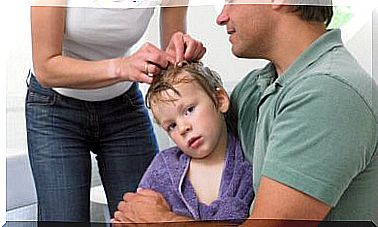Cleft Lip: What Is It And What Are Its Consequences

Cleft lip is medically described as an open cleft on the upper lip. According to specialists, it occurs due to the unfinished union of the maxillary and nasolateral processes of the fetus. It occurs during the development of facial features, between the second and third month of pregnancy.
It occurs mostly in children with a genetic predisposition, but there are also factors and habits that influence its appearance. Poor diet, smoking and alcohol intake during pregnancy are some of them. Exposure to chemicals and a lack of vitamins, such as folic acid, also play a role.
In 2011, it was estimated that one in 750 children was born with a cleft lip. Although there are currently no accurate figures on its incidence, it is known to be one of the most common congenital malformations. It can arise in isolation or accompanied by other alterations, such as a cleft palate.
How is it evidenced and corrected?
Cleft lip does not affect the vital functions of the human being, but it represents a great discouragement for families. This is due to its impact on the child’s physical appearance and the physiognomic and emotional consequences that derive from it.

This abnormal condition implies the formation of slight or significant fissures, which usually expand backwards, until they reach the palate or gum. They can be unilateral or bilateral, that is, they involve one or both sides of the mouth.
Depending on the case, a craniofacial surgery is considered to correct this situation. What is sought with it is to ensure that the little one can lead a normal life. Hence, it is advisable to operate before 12 months of age. Depending on the severity, it will be determined whether one or more interventions are required.
There are doctors who advise the use of a prosthesis before going to the operating room. This will close the gap and stretch your lip muscles. In addition, it will give an evenness to the nose and reduce the risk of choking during meals. It is said that by using these retainers the results are more favorable.
Who does it affect and what are its consequences?
There is not enough scientific evidence to explain it, but it has been shown that men are more prone to cleft lip. The chances increase if there is a history of the same condition, but this is not decisive.

What is certain is that when a child is born with this abnormality, the chances of his brother suffering from it range from 2 to 8%. It is advisable to seek support from a genetic specialist to carry out a prenatal detection; This is done using 3-D ultrasound and other advanced methods.
Cleft lip patients may have the following complications:
- Ear infections.
- Hearing loss.
- Deformity in the teeth.
- Breathing difficulties.
- Problems gaining weight.
- Delayed growth and speech.
- Expulsion of milk through the nostrils.
Not to mention the possible exclusion of which they may be victims because they are considered different. Therefore, treatment before the start of schooling is essential. It will be very useful to prevent psychological trauma that deteriorates your confidence and self-esteem.
Caring for a child with a cleft lip
While determining the most suitable method for its treatment, it is vital to ensure the correct nutrition of the baby. With the help of the specialist, strategies should be applied so that food does not go into the respiratory tract.
If there is an absence of cleft palate, breastfeeding can proceed without problems. Bottles can be a good complement, but you have to take breaks every five minutes and avoid taking more than half an hour.
In the same way, you have to take care that the milk flow is slow and smooth. And also that the nipple points towards the cheek on the healthy side and not towards the throat. Once the child is operated, clinical control must be maintained. After a few years, speech therapy or orthodontic treatments may need to be applied.
The multidisciplinary team to successfully deal with cleft lip is comprised of pediatricians, speech therapists, and dentists. Also involved are nurses, psychotherapists, otolaryngologists and rehabilitation specialists.
Prevention is imposed in these cases, mainly if there is a family history. The knowledge of this pathology, of the genetic bases and of the correct control in pregnancy are essential.
Other simple actions like taking folic acid can make a difference. Even for the prevention of neural tube closure defects, which are much more serious and delicate.










